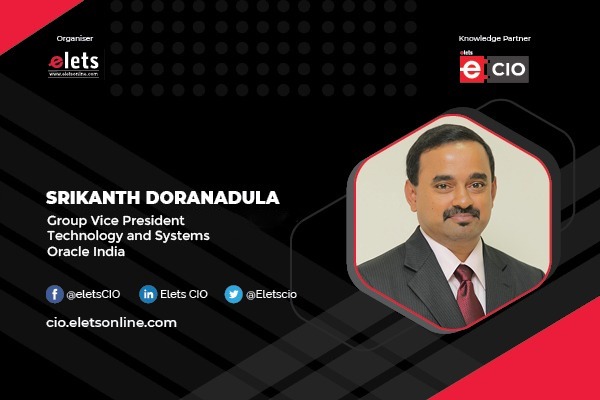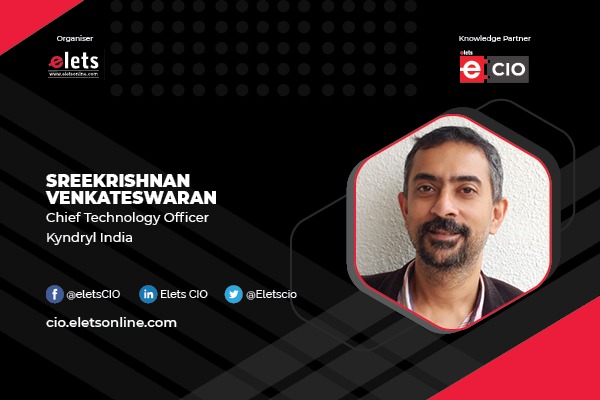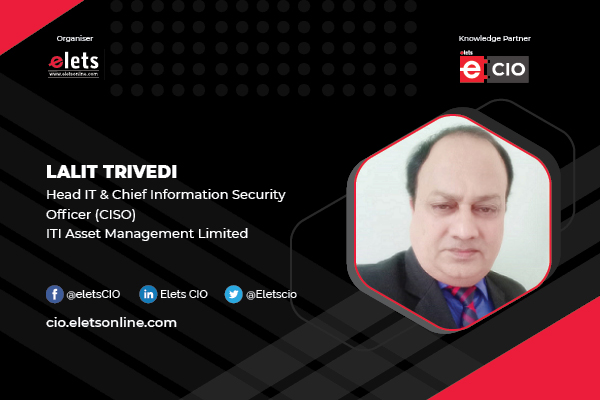
There are different solutions which go into a smart city tender and surveillance becomes one of the components in the overall agenda. Talking about smart city tenders, as you know, most of the smart cities have already been listed by the government and depending on what a city’s needs are the cities float their tenders, says Sudhindra Holla, Sales Director, Axis Communications, in conversation with Rajneesh De of Elets News Network (ENN).
What have been the focus areas for Axis Communications in the last one year? Which are the verticals that have witnessed maximum traction and what are the solutions that were offered by Axis?

Over the last year, the focus for Axis has been on government as a segment. Axis has always been very strong in the commercial and enterprise segment, but we see that the government-led consumption is at an overall high level. The sub segments of government are plenty—critical infrastructure, airports, smart cities, and so on—which are our key consumption segments. From a products and solutions standpoint, Axis has typically been a product-centric organisation. Over the last 12 months, we have launched a couple of end-to-end solutions such as the perimeter defender, retail suite and our access control solutions, which can all be integrated with our IP audio solutions. These launches have broadened the Axis offerings that we provide to our customers.
Also Read: Axis driving innovative network solutions globally-Sudhindra Holla
What kinds of organisations have adopted the solutions offered by you?

The Axis Retail suite offers a great deal of solutions to retailers. The retail suite offers analytics which provide queue management solutions and helps understand customer demographics and buying behaviour. Another component of our retail suite is heat mapping, which enables retailers to identify the store’s hot spots and dead areas to help with the store’s operations. The retail surveillance system can also provide the store owner with comparative studies or quarterly reports of the conversions of visitors into customers. Any retailer who wishes to automate his retail business operations is a potential customer for Axis.
How has been the response from your clients in India?
Adoption is happening in India because more and more people want to move and streamline their processes. People would definitely want these kinds of solutions.
You said the government vertical was Axis Communications’ focus segment in the past one year. Could you tell us about certain verticals where adoption had been maximum during the same period?
One example of the government as a segment is Hyderabad city, where there are multiple projects running. One is community surveillance project under which each and every establishment is required to have surveillance and it is connected to a cloud background that can be used by the city administration or the security forces.
There is another project which is being run by the police for city surveillance. Axis has been part of both these at project level. So, Hyderabad is one city where Axis has been part of multiple projects. The enterprise segment is something in which Axis has always been strong and has a global customer base. Being a global company, Axis have got global customers who are present in India too.
City surveillance has been part of most of the smart city projects and in many smart cities actual deployments that have happened were around surveillance. So, how far Axis has been successful in getting into this space and how many smart city projects actually you are part of now?
Well, smart cities go for consolidation of different solutions. Surveillance is just one small component in the entire gamut of solutions. It could be automation of traffic, metering, parking solutions or smart poles or multiple environmental sensors.
There are different solutions which go into a smart city tender and surveillance becomes one of the components in the overall agenda. Talking about smart city tenders, as you know, most of the smart cities have already been listed by the government and depending on what a city’s needs are the cities float their tenders. Now if a city wants automation at meter level for their water and electricity consumptions, they’ve gone ahead and done modernisation in that. Similarly, if a city’s need is traffic congestion analysis and related processes, they’ve gone for surveillance. So, it is not one formula that fits every city.
Looking ahead in terms of products and solutions as well as industries, what are going to be the focus areas for Axis in the next few months?
About a year and a half ago, Axis had acquired a French company called Citilog, which is mainly into highway and city traffic solutions. It provides city administrators with data and helps highway authorities instantly detect discrepancies and determine the course of action. Since Axis has acquired Citilog, the focus is will remain on cities. Cities are looking for solutions to ease and help their administration make better decisions. Another focus segment for Axis is retail – it has been so in the past year and it will continue to be our focus for 2019.
Speaking of solutions that we have our focus on, Axis is a pioneer in introducing IP audio solutions and we are working towards increasing the adoption of it as well. Previously, audio was solely analog, and our customers are looking to transition to IP. Ever since surveillance systems have begun using IoT as a platform, we have able to integrate IP audio into it, which we see a lot of traction for. For example, IP audio integrated surveillance systems can be deployed at any premises or perimeters to communicate on ground directly from the command centre – we can automate the announcements as well. Without any human intervention, the moment there is someone trespassing, a pre-recorded announcement could be made or an alarm could go off.
These are some of the solutions which will continue to drive the change in every segment.
How many adoptions have happened here in India? Which are the sectors they belong to?
We’ve got two-three customers in the last 12 months and these are sizeable ones. The adoption has happened in various sectors including government, manufacturing and education.
What typically will be the average cost of deployment?
The way you will have to look at costing is the total cost of ownership and whether a solution is on an IoT platform or a non-IOT platform. It really is a non-comparable solution and it depends upon the size of the deployment and other such factors.












